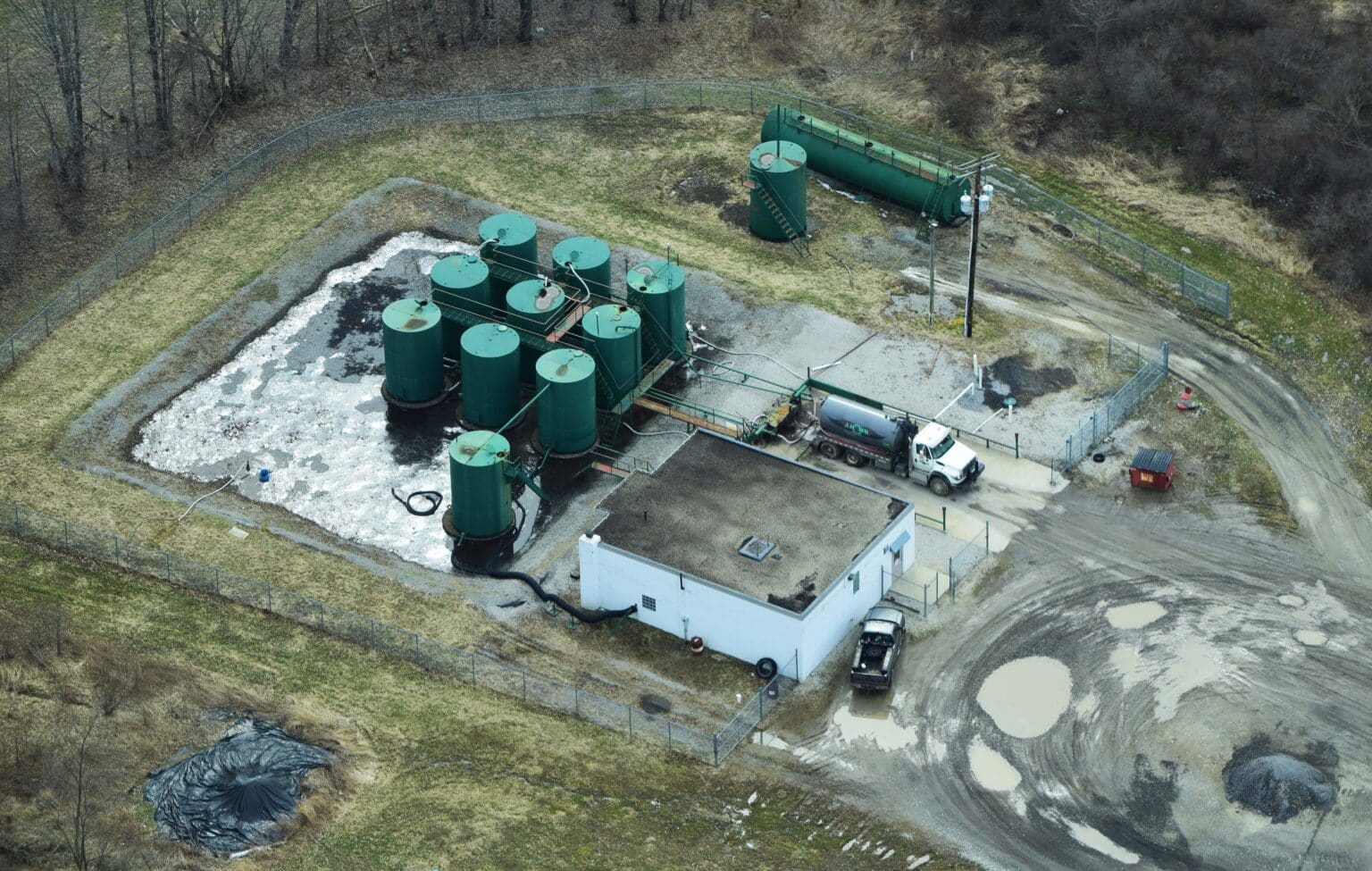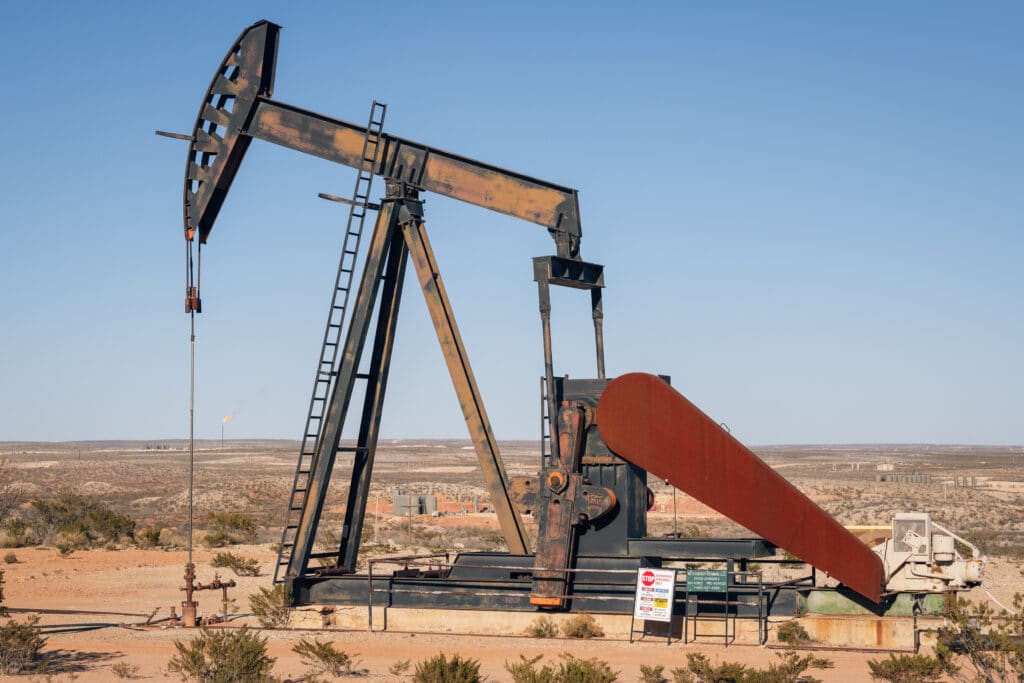On a January day in 2021, a fountain of fracking wastewater unexpectedly erupted from deep underground in Noble County, Ohio. Instead of remaining thousands of feet beneath the Earth’s surface, where the corrosive brine had been pumped for disposal, it had migrated into an idled oil and gas production well over two miles away. There, the liquid waste spewed out of the ground for four days, releasing an estimated 40,000 barrels of toxic slurry into eastern Ohio streams and killing hundreds of fish.
This incident represents the growing problem with fracking waste injection wells in Ohio, a state that has become a dumping ground for oil and gas industry waste.
But a coalition of more than two dozen frontline community groups and environmental justice organizations in Ohio are trying to change that. These groups are asking the federal government to take control of the state’s oil and gas wastewater injection well program, arguing that Ohio has failed to effectively protect underground sources of drinking water.
The “culture of permissiveness” at the state regulator — Ohio’s Department of Natural Resources (ODNR) — has meant that the oil and gas industry’s handling of fracking waste has led to chronic violations with few meaningful consequences, according to a petition submitted in October to the U.S. Environmental Protection Agency (EPA). The petition documents specific instances in which oil and gas wastewater may pose dangers to drinking water, including waste injected underground that migrated outside of its intended location, spills at the surface, and even fracking waste that seeped into oil and gas wells, impacting production.
Oil and gas drilling and hydraulic fracturing are riddled with environmental and public health hazards. But after drilling, in addition to the fracking chemicals shot down the well with sand and water to release trapped oil and gas, enormous volumes of toxic and often radioactive wastewater also come up out of the well. Operators need to put this waste, a nasty substance called “brine,” somewhere, and either they or a contractor typically truck it to a separate location and pump it back underground in what are known as injection wells.
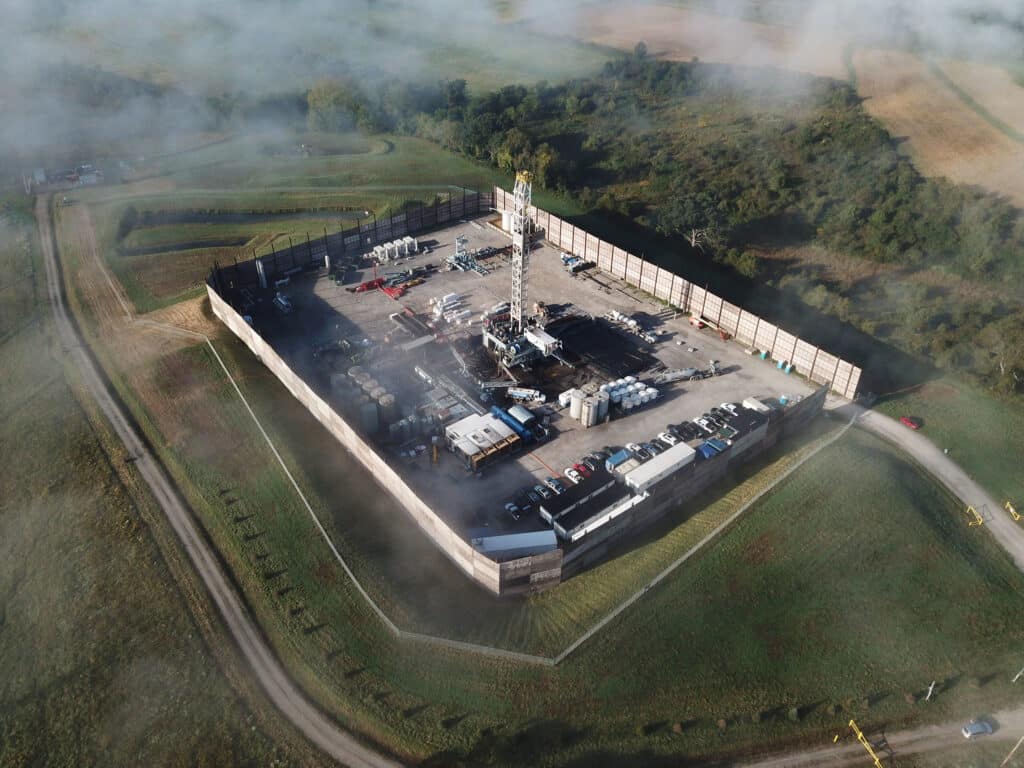
The Appalachian region encompassing the Utica and Marcellus oil and gas fields in Ohio, Pennsylvania, and West Virginia produces more than 35 billion cubic feet of gas per day, doubling in less than a decade. As a result, the amount of fracking wastewater injected underground in Ohio has surged from 690 million gallons in 2013 to 12.7 billion gallons in 2020, according to Physicians for Social Responsibility and FracTracker Alliance.
Fracking waste is the unseen “connective tissue” that allows the industry to keep its costs low, Ted Auch, the Great Lakes program coordinator for FracTracker Alliance, a watchdog group, told DeSmog. Without cheap disposal, many small and medium-sized fracking companies would not be able to operate. Brine trucks will go to where disposal is cheapest, and Ohio has emerged as the de facto destination in the region, according to Auch.
The petition filed by Earthjustice, representing 27 organizations including Buckeye Environmental Network, FracTracker, Sierra Club, Between the Waters, Ohio Brine Task Force, Ohio Poor Peoples Campaign, and many others, alleges that Ohio runs a habitually dysfunctional regulatory regime for these injection wells and asks the EPA to begin a rulemaking process to revoke the state’s ability to oversee its own injection well program.
Their petition identifies a long list of deficiencies in Ohio’s program. First, ODNR, the agency regulating injection wells, consistently refuses to enforce violations. Second, even if it wanted to, the state regulator has no authority to enact penalties. Instead, it needs to go to the state attorney general to take action, a cumbersome process.
“As you can imagine, that makes it basically impossible for ODNR to take any timely enforcement action,” Megan Hunter, a senior attorney with Earthjustice, who co-authored the petition, told DeSmog.
Despite repeated and ongoing violations from waste operators, ODNR has only followed through on enforcement of penalties six times in its 39-year history, according to the document. In a statement to DeSmog, a spokesperson said the agency “disagrees” with that statistic, but didn’t offer any more detail and said it could not comment further because of ongoing litigation.
Even in instances of egregious violations, ODNR cannot permanently suspend operations at an injection well. It can issue a temporary suspension, but once the company spells out how it will correct the issue, injection operations can proceed within days or weeks even if dangerous conditions are ongoing.
Those shortcomings would be problems on their own, enough to hold back an earnest regulator. But, the petition suggests, ODNR largely acts as a rubber stamp for waste handling companies. State rules are “permissive,” and ODNR permits injection wells in places that are geologically “unsuitable,” according to the coalition petition.
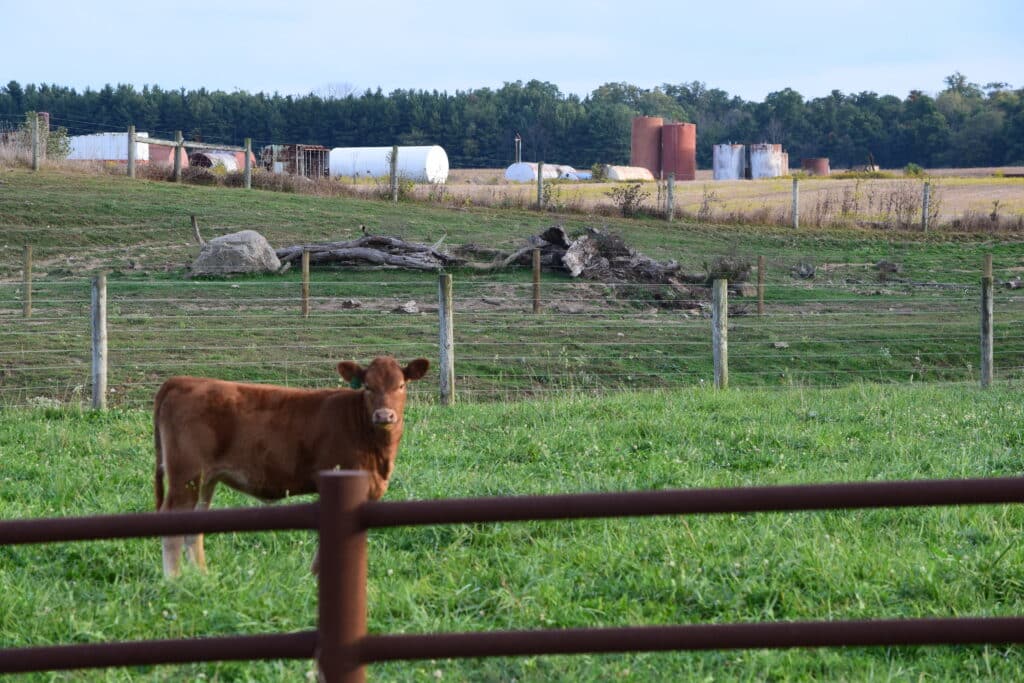
The state agency has presided over an enormous increase in the number of injection wells. Ohio has an estimated 227 active injection wells, with most located in rural, lower-income Appalachian counties, raising environmental justice concerns. In fact, a 2018 peer-reviewed study conducted by Yale researchers found that the number of injection wells in an area tended to rise as median income dropped, even after controlling for other variables. In other words, disposal companies put fracking waste in poor areas, and ODNR allows that dynamic to play out.
Critics characterize the agency as “captured” by industry. “Most of [ODNR’s] money comes from the oil and gas industry,” Teresa Mills, executive director of Buckeye Environmental Network, and a signatory of the petition, told DeSmog. “They’re not going to cut off their nose to spite their face.”
“There are flagrant violations. And with no enforcement mechanism, the companies are just flipping ODNR the bird. ‘You’re not going to do anything to us, so we’re not going to pay attention to you,’” Mills said of the industry’s relationship with its regulator.
Injecting Waste in Geologically “Unsuitable” Locations
The oil industry’s largest trade group, the American Petroleum Institute, claims that injection wells are safe and environmentally reliable, in part because the waste is going so far beneath the ground and far below sources of groundwater. But that assertion assumes the wastewater stays put.
In 2019, wastewater injected into the Redbird #4 well in Washington County in southeast Ohio resurfaced through a couple of entirely separate oil and gas wells located five miles away, moving far outside of the permitted area.
“We’ve seen an increase in incidents recently where oil and gas waste is migrating underground and returning to the surface,” Hunter, the Earthjustice attorney, said. “If you have something traveling that far underground and then coming back up, then the shallower [groundwater] aquifers can be at risk.”
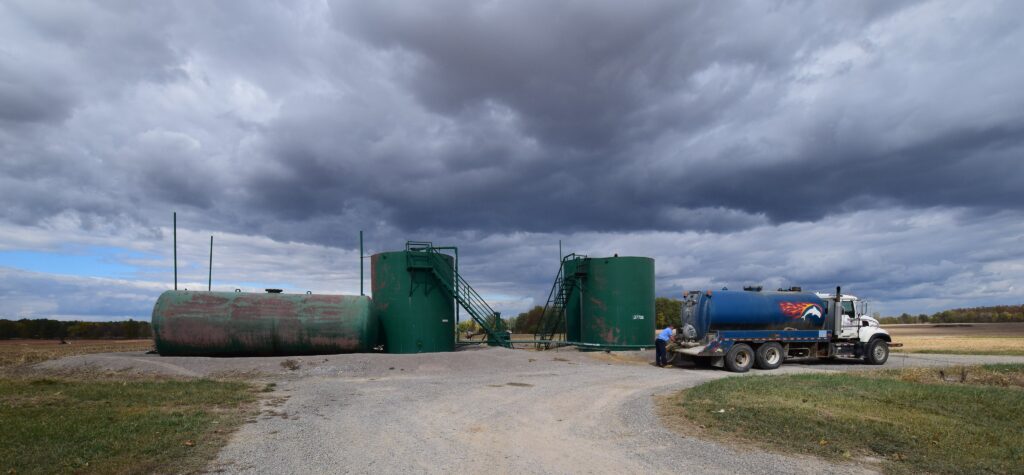
A technical analysis, commissioned by Earthjustice and conducted by Robert Rossi and Dominic DiGiulio, two research scientists with PSE Healthy Energy, a nonprofit energy science and policy research institute, documented a long list of problems with both the permitting and due diligence of ODNR regulators overseeing injection wells. The analysis looked at six injection wells, and the results of the study were submitted to the EPA along with the Earthjustice petition as evidence of ODNR’s failures.
Wastewater is supposed to be injected beneath an impermeable layer of rock, which would seal it off from drinking water aquifers higher up in the subsurface. But the scientists found that ODNR was allowing injection wells in shale formations that had a fractured network of rock, which allows wastewater to find fissures and travel far away from its intended location. The geologic conditions were therefore “unsuitable” for wastewater disposal, the analysis concluded.
Because the Redbird well’s wastewater traveled five miles laterally and almost 2,000 feet vertically, the report concluded, “it is exceedingly clear that the injection formation was not isolated and begs the question of if the geological suitability of this formation was even considered by the ODNR during permitting.”
A second finding was that ODNR was allowing too many wells to be located near each other, resulting in “overpressurization” of the subsurface.
“There’s so much injection occurring, that [the formation] just can’t support injection any longer and you’re seeing things rise to the surface as a result of that,” Hunter said. Instead of looking at the cumulative impact of so much high-pressure wastewater shoved underground, ODNR assesses permits individually.
In a statement to DeSmog, Stephanie O’Grady, a spokesperson for ODNR, said that the U.S. EPA “has consistently reaffirmed that Ohio operates an effective regulatory program that meets federal standards and protects public health, safety, and the environment. The Division takes our responsibility to protect Ohio’s groundwater, surface water, and environment seriously, as demonstrated by our rigorous permitting process, regular inspections, and enforcement.”
New rules issued by ODNR at the start of 2022 dial back the approved pressure and volumes allowed for injection wells. But they still permit injection in the exact same shale formation that saw wastewater escape and migrate long distances underground. If toxic waste is moving so far beyond its intended locations, then sources of drinking water could be at risk, the petition alleges.
“How is it affecting us?”
Even when everything goes right, the day-to-day of living next to a wastewater injection well has its downsides.
Michele Garman lives in a rural area north of Youngstown, Ohio, not far from the Pennsylvania border. About six years ago, with very little public notice and against community opposition, a local company called Kleese Development drilled an injection well adjacent to her property and visible from her house.
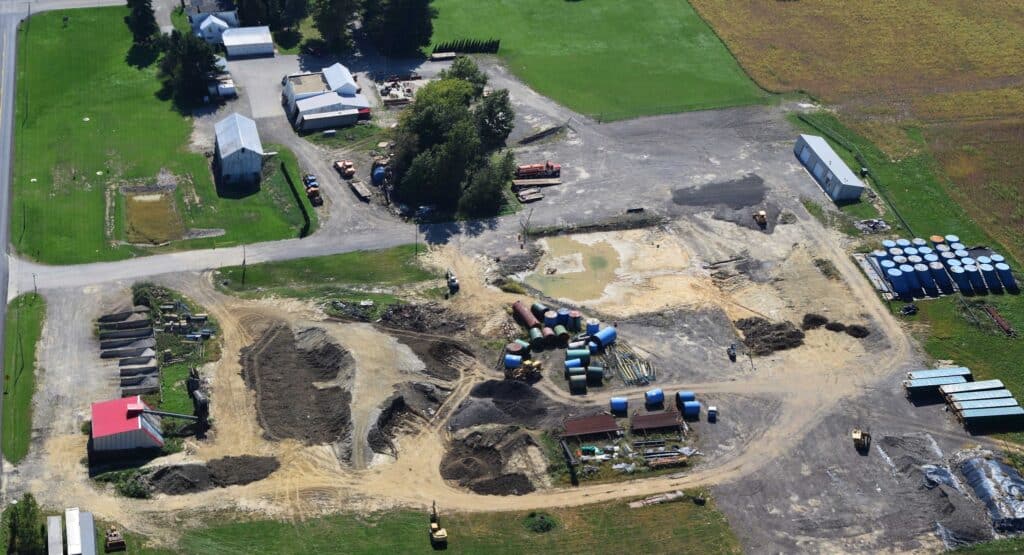
She said trucks bringing the wastewater for disposal run frequently and sometimes at odd hours. “I notice them more at two or three in the morning,” Garman told DeSmog. And she recalls, at one Fourth of July party, “We watched the trucks come in and out all day.”
In addition, Garman said that at times there are terrible oily odors wafting from the well pad. While she opposed the injection well when it went in, she has largely learned to live with the trucks and smells. But those aren’t her only concerns. “The worrisome part is what’s going on underneath us. The stuff you don’t see or hear,” she said.
Very little public information exists revealing specifically what is in the waste destined for injection wells like the one next to Garman’s land, but what is known is concerning.
“We know that the waste in the Marcellus/Utica region in particular is radioactive, highly radioactive,” Hunter said. “We know that it has PFAS in it. Of course, we already know that it is extremely salty and that it has heavy metals and other organics that are dangerous and harmful to human health and the environment.” (PFAS are also known as “forever chemicals” due to their long-lived nature and are linked to various potential health impacts.)
But there is no requirement for operators to detail or disclose any specifics. Moreover, there are no studies on the human health impacts of wastewater injection wells, so the hazards are largely unknown.
For Garman, all the uncertainty surrounding fracking wastewater is disconcerting. “Where is it all going? How is it affecting us?” she said.
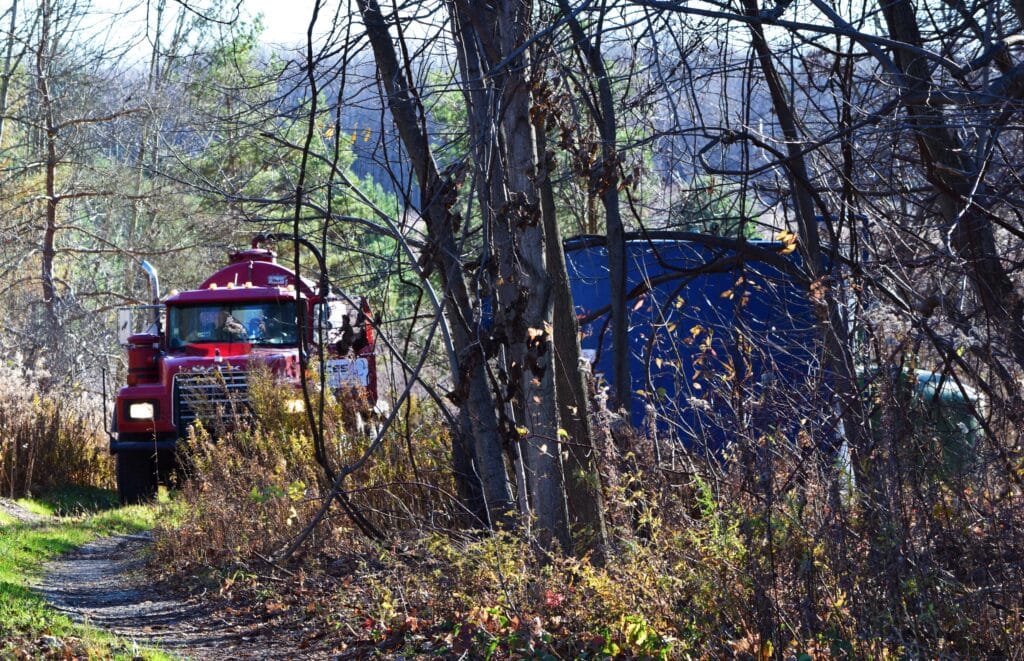
Nearly a decade ago, eastern Ohio resident Tom McKnight said he saw people who were hauling brine bringing in paychecks that were “pretty doggone respectable.” With three kids to support, he decided to get into trucking as well. He worked as an oil and gas brine hauler in Ohio between 2014 and 2018, and in the first year made $70,000.
However, McKnight believes he was exposed to radiation from his years trucking fracking waste. “The most dirty, dangerous water I think that I’ve ever been around is what they call the ‘flowback’ while they are bringing a new well online. That is some nasty, dirty stuff,” he said. Flowback is the water and chemical mixture that shoots up out of an oil and gas well after it has been fracked and the well is in the process of coming online.
He recalled one time when he was sucking wastewater out of some tanks, and he opened up the manhole and stuck his head in. “At the end of the day, between my gloves and my shirt sleeves, and my face and my v-neck on the chest, I looked like I had been out in the sun all day,” he said, thinking that his reddened skin was the result of exposure to radiation. “So I’m pretty sure I got a pretty good dose that day.”
McKnight no longer works because he has Thymoma, a form of cancer of the thymus, a gland in the chest. He had several operations to remove part of his liver and a six-pound tumor from his chest. He also had throat cancer. But it’s not easy to definitively link workplace exposures like McKnight’s, and the appearance of cancer. “It could have come from anything, or the accumulation of everything,” he said.
“It Was Going in Whether We Wanted it or Not”
When Garman voiced opposition to the project next to her home in 2015, she felt like neither the company nor the state cared. “It was going in, whether we wanted it or not. That’s my general feeling,” she said.
When a waste company applies for an injection well permit, its approval is essentially a foregone conclusion, environmental experts say, and whatever public notice happens appears to be lacking.
“Typically, communities wouldn’t even know they’re getting an injection well until a drilling rig shows up,” said Mills of the Buckeye Environmental Network.
Even when communities are aware of a proposed project and push back, the state agency largely ignores the complaints.
“The problem with the [public] hearing is that even though the public provides input on safety issues and concerns with injection wells, the ODNR director has no discretion. As long as the permit is correctly filled out, their permit gets granted,” Lenny Eliason, Athens County (Ohio) Commissioner, said on a call with reporters in October. “So why have a public hearing? Why involve the public in a sham process when you’re not going to do anything about acting on the information that’s provided during that public hearing?”
In a statement to DeSmog, O’Grady, the ODNR spokesperson, said that the agency “does believe that its permitting process has adequate public notification and input.”
DeSmog followed up with specific questions asking for documentation on how many times the agency has denied injection well applications and enforced violations. O’Grady said the agency has denied 12 applications this year, but when asked for documentation, she sent denials to only four applications, and said ODNR could not comment further. ODNR also did not respond to a request for documentation on its history of enforcement.
EPA vs. State “Primacy”
The governance of wastewater injection wells falls under the Safe Drinking Water Act. While it is a federal law, it gives states leeway to apply for “primacy,” which is the ability for states to govern their own injection wells. Ohio successfully obtained primacy back in 1983, and as a result, has overseen the proliferation of injection wells over the past two decades with the boom in fracking.
Pennsylvania, on the other hand, has federal EPA supervision over its injection well program. Both states have extensive fracking operations, but because it is much easier to dispose of fracking waste in Ohio, convoys of brine trucks often haul toxic and low-level radioactive waste from drill sites in Pennsylvania across the border to Ohio.
McKnight trucked waste to and from well sites across much of eastern Ohio, as well as from oil and gas wells in southwest Pennsylvania to injection wells in Ohio. “It’s a big industry. It’s a big employer,” he said.
In fact, more than 40 percent of the waste injected underground in Ohio actually comes from out of state, according to data from FracTracker.
“Our state legislators will stand at the state line and just wave them on in. ‘Come on in. We love ya,’” Mills said, characterizing Ohio’s willingness to take huge quantities of waste from Pennsylvania.
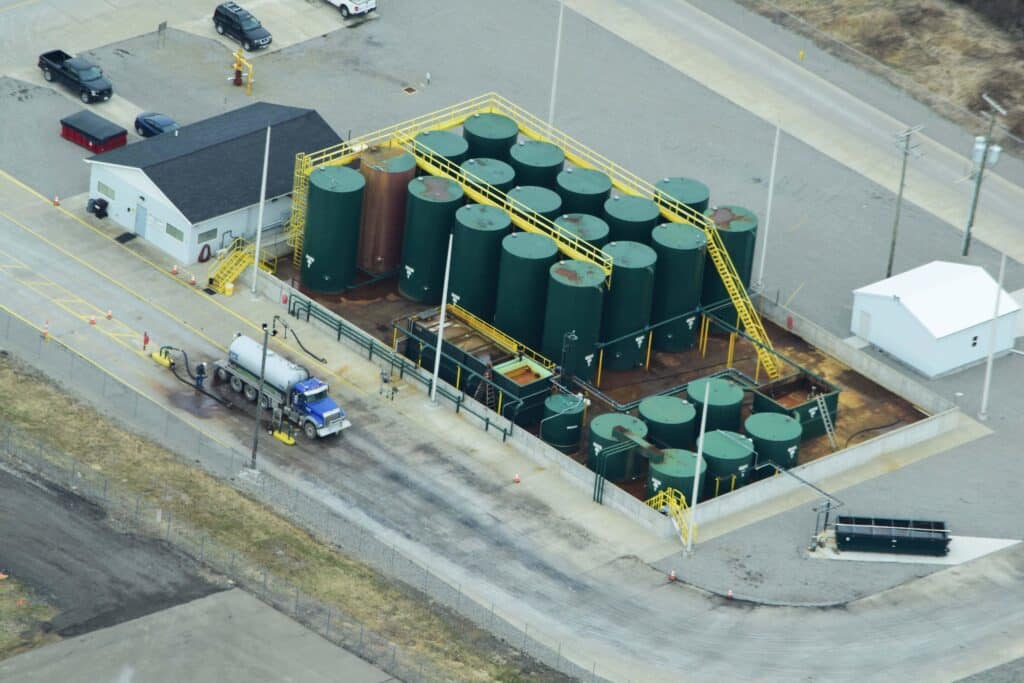
But geologically speaking, there’s no reason Pennsylvania can’t dispose of its own fracking wastewater, said Ted Auch of FracTracker. He said the industry doesn’t have much interest in applying for permits in Pennsylvania because “they can rely on Ohio to dispose of its waste.” That puts added pressure on Ohio regulators to deal with this flood of fracking wastewater and the injection wells needed for its disposal, and the environmental and community coalition filing the petition to the EPA thinks the state isn’t keeping up with that responsibility.
The coalition is calling on the federal agency to initiate a rulemaking process that would eventually lead to Ohio losing its “primacy” and having regulatory oversight revert back to the federal government. The process is lengthy and could take several years, if it succeeds at all.
Ohio is not necessarily unique in this regard. Other states, including Idaho, Michigan, and Oklahoma, have wrestled with whether or not the state or the federal government should have primacy over injection wells. But revoking state primacy due to poor regulatory oversight would be unprecedented.
In the meantime, the army of brine trucks will continue hauling fracking waste to injection wells in Ohio.
Auch says the petition for the EPA to take over is “kind of the last hope” for reforming the problems documented with Ohio’s injection wells.
“We know that the state doesn’t collect good data. We know that the state rubber stamps injection wells,” he said. Looking at Pennsylvania, which has a more methodical permitting process due to EPA oversight, Auch said, “it’s like, maybe we should sign up for that.”
Subscribe to our newsletter
Stay up to date with DeSmog news and alerts


